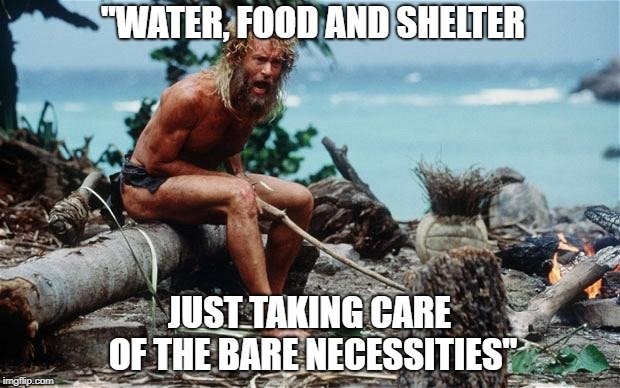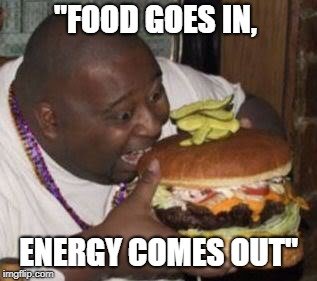Table of Contents (click to expand)
Metabolism refers to the set of chemical reactions that occur in living organisms in order to maintain life. These reactions can be divided into two main types: catabolism and anabolism. Catabolism is the process of breaking down complex molecules into simpler ones, releasing energy in the process. Anabolism is the process of using that energy to build new, complex molecules.
The vast majority of people take the incredible functioning of their own bodies for granted. This is slightly understandable, however, since most of the processes that keep us alive are largely out of our own control. Most of the systems, behaviors and reactions that occur in the body do so without our conscious thought or control, aside from remembering to eat food, drink water, sleep regularly and avoid dangerous or extreme conditions.

So, what is this mysterious, silent force that guides us from morning till night and birth to death, doing its very best to ensure that we survive and thrive? Quite simply – our metabolism.
This word is thrown around a great deal, particularly in relation to weight loss issues, fat-burning, and our annoying friend who complains: “No matter how much I eat, I can’t seem to gain any weight. My metabolism is just super fast!” The word metabolism has a great deal more significance than that, however, and it’s something that everyone should understand a bit better?
What Is Metabolism?
Metabolism is the collective noun for the thousands of chemical reactions that occur in our body every single day of our lives, primarily those that relate to energy conversion, which is essential to survival and bodily functions. This set of processes serves three main purposes within the body – to break down the food we consume into usable energy for cellular function, to convert broken down food into usable molecules, such as lipids, carbohydrates, proteins, and nucleic acids, and to eliminate certain waste products from the body.
While those may seem like relatively simple objectives to achieve, the vital processes of the metabolism are what keep us alive; without usable energy converted from the food we eat, our bodies would shut down. In other words, metabolism is the user manual for our body’s engine, which makes it very important indeed.

At the most basic level, metabolism can be divided into two main divisions, catabolism and anabolism, which we will explain in greater detail below.
Also Read: Aerobic Metabolism Vs Anaerobic Metabolism
What Is Catabolism?
Simply put, catabolism, also known as destructive metabolism, is the collection of processes that break down the food and liquid molecules that we consume into usable forms of energy. The food we eat is in the form of vegetables, fruits, grains, animal proteins etc., but our body cannot use food in that form.
Catabolic processes break down biomolecules into smaller units, which can then be oxidized, or they can be used in anabolic processes (creative metabolism) to create new larger molecules. You probably already know the major catabolic process in the body – digestion! When larger molecules are broken down into smaller ones, energy is released that can be used by an organism.
Some of the major catabolic processes in the body are the breakdown of polysaccharides (glycogen, starch etc.) into monosaccharides (fructose, glucose etc.), the breakdown of proteins into nucleic acids, and the breakdown of nucleic acids into nucleotides.
Catabolic processes are often associated with certain triggering hormones, including adrenaline, glucagon, cytokines and cortisol. As with anything that occurs in the body, catabolic processes must be regulated and controlled, which is why these hormones are so crucial. These hormones will affect everything from your heart rate and oxygen absorption levels to your blood glucose concentration and the efficacy of communication between your cells.
When these hormones are activated, released or triggered, they will stimulate the necessary breakdown of available nutrients to produce energy for the body to function. For example, when you are faced with a dangerous situation, the body goes into fight-or-flight mode, at which point adrenaline is released, which speeds up your heart rate, increases your lung’s capacity for oxygen intake, and stimulates the breakdown of glycogen into glucose, the basic energy unit that the body can use to either fight or flee.
Also Read: What Are The Different Steps In Cellular Respiration?
What Is Anabolism?
As with so many things in nature, there is a natural balance to the metabolism. While catabolic pathways are considered destructive forms of metabolism, anabolic pathways are constructive forms. Another word for anabolism is biosynthesis, because these processes synthesize small molecules into larger and more complex compounds that the body requires. On the large scale, you can see the results of anabolism in a growing child, a healing wound, or a swelling muscle. On the microscopic scale, anabolic processes in cells include amino acids (monomers) building into proteins (polymers).
As is the case of catabolism, anabolism is also controlled or regulated by hormones, primarily the human growth hormone, insulin, testosterone and estrogen, among others. Anabolic processes are largely fueled by catabolic processes, as the body requires energy and the raw materials before it can do work and create more complex molecules.

Now that you understand some of the intricacies of metabolism – namely the breakdown and formation of different molecules necessary for life – we should address one of the most common subjects related to the metabolism, the “speed” at which it operates.
Metabolism And Weight Management
When people struggle to maintain their size, or lose a certain amount of weight, the metabolism is often pointed to as the culprit. You have probably heard many people claim that they have either a slow or a fast metabolism, which therefore affects their body size. However, these types of claims are not backed by science, which has shown that most people’s metabolic rates are actually quite similar. There are some conditions, such as thyroid disorders, that will slow or speed the metabolism and impact body size, but these are relatively rare.
The factors that do affect your metabolism include your body composition, your age and your sex. Those who have more muscle mass will naturally burn more calories, even when they’re not exercising. Men tend to have more muscle mass than women, making it easier to shave off calories and weight. Finally, as we age, our level of physical activity often drops, as does muscle mass, which makes it more difficult to lose weight.

When you add energy into the body (by eating food), if the body doesn’t need to use it all, it will be stored as fat. When the body requires this energy, those stores can be broken down and used (catabolism), resulting in weight loss. The balance of what you consume and what physical activity you perform will determine your success or failure when it comes to managing your weight.
That being said, the types of exercises you are performing can have an effect on your weight. Catabolic exercises are those that break down fat and burn calories, such as running, aerobics, swimming, biking etc. Anabolic exercises are those that are geared towards increasing muscle mass, such as weight-lifting, resistance training, or any other intense, concentrated form of working out.
A Final Word
The human metabolism may seem complex, but understanding the anabolic and catabolic aspects will help guide your lifestyle decisions. When you are choosing which foods to put into your body, consider their nutritional value, and don’t overeat if you are trying to slim down! Furthermore, when exercising, choose wisely between catabolic and anabolic exercises, depending on what your individual health goals are!
How well do you understand the article above!

